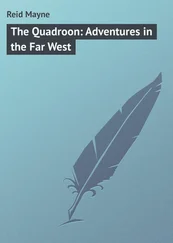Mayne Reid - The Cliff Climbers
Здесь есть возможность читать онлайн «Mayne Reid - The Cliff Climbers» — ознакомительный отрывок электронной книги совершенно бесплатно, а после прочтения отрывка купить полную версию. В некоторых случаях можно слушать аудио, скачать через торрент в формате fb2 и присутствует краткое содержание. Жанр: literature_19, foreign_antique, foreign_prose, foreign_children, на английском языке. Описание произведения, (предисловие) а так же отзывы посетителей доступны на портале библиотеки ЛибКат.
- Название:The Cliff Climbers
- Автор:
- Жанр:
- Год:неизвестен
- ISBN:нет данных
- Рейтинг книги:4 / 5. Голосов: 1
-
Избранное:Добавить в избранное
- Отзывы:
-
Ваша оценка:
- 80
- 1
- 2
- 3
- 4
- 5
The Cliff Climbers: краткое содержание, описание и аннотация
Предлагаем к чтению аннотацию, описание, краткое содержание или предисловие (зависит от того, что написал сам автор книги «The Cliff Climbers»). Если вы не нашли необходимую информацию о книге — напишите в комментариях, мы постараемся отыскать её.
The Cliff Climbers — читать онлайн ознакомительный отрывок
Ниже представлен текст книги, разбитый по страницам. Система сохранения места последней прочитанной страницы, позволяет с удобством читать онлайн бесплатно книгу «The Cliff Climbers», без необходимости каждый раз заново искать на чём Вы остановились. Поставьте закладку, и сможете в любой момент перейти на страницу, на которой закончили чтение.
Интервал:
Закладка:
Mayne Reid
The Cliff Climbers A Sequel to «The Plant Hunters»
Chapter One.
The Himalayas
Who has not heard of the Himalayas – those Titanic masses of mountains that interpose themselves between the hot plains of India and the cold table-lands of Thibet – a worthy barrier between the two greatest empires in the world, the Mogul and the Celestial? The veriest tyro in geography can tell you that they are the tallest mountains on the surface of the earth; that their summits – a half-dozen of them at least – surmount the sea-level by more than five miles of perpendicular height; that more than thirty of them rise above twenty thousand feet, and carry upon their tops the eternal snow!
The more skilled geographer, or geognosist , could communicate hundreds of other interesting facts in relation to these majestic mountains; vast volumes might be filled with most attractive details of them – their fauna , their sylva , and their flora . But here, my reader, we have only space to speak of a few of the more salient points, that may enable you to form some idea of the Titanic grandeur of these mighty masses of snow-crowned rock, which, towering aloft, frown or smile, as the case may be, on our grand empire of Ind.
It is the language of writers to call the Himalayas a “chain of mountains.” Spanish geographers would call them a “sierra” (saw) – a phrase which they have applied to the Andes of America. Either term is inappropriate, when speaking of the Himalayas: for the vast tract occupied by these mountains – over 200,000 square miles, or three times the size of Great Britain – in shape bears no resemblance to a chain. Its length is only six or seven times greater than its breadth – the former being about a thousand miles, while the latter in many places extends through two degrees of the earth’s latitude.
Moreover, from the western termination of the Himalayas, in the country of Cabul, to their eastern declension near the banks of the Burrampooter, there is no continuity that would entitle them to the appellation of a “chain of mountains.” Between these two points they are cut transversely – and in many places – by stupendous valleys, that form the channels of great rivers, which, instead of running east and west, as the mountains themselves were supposed to trend, have their courses in the transverse direction – often flowing due north or south.
It is true that, to a traveller approaching the Himalayas from any part of the great plain of India, these mountains present the appearance of a single range, stretching continuously along the horizon from east to west. This, however, is a mere optical illusion; and, instead of one range, the Himalayas may be regarded as a congeries of mountain ridges, covering a superficies of 200,000 square miles, and running in as many different directions as there are points in the compass.
Within the circumference of this vast mountain tract there is great variety of climate, soil, and productions. Among the lower hills – those contiguous to the plains of India – as well as in some of the more profound valleys of the interior – the flora is of a tropical or subtropical character. The palm, the tree fern, and bamboo here flourish in free luxuriance. Higher up appears the vegetation of the temperate zone, represented by forests of gigantic oaks of various species, by sycamores, pines, walnut, and chestnut trees. Still higher are the rhododendrons, the birches, and heaths; succeeded by a region of herbaceous vegetation – by slopes, and even table-plains, covered with rich grasses. Stretching onward and upward to the line of the eternal snow, there are encountered the Cryptogamia – the lichens and mosses of Alpine growth – just as they are found within the limits of the polar circle; so that the traveller, who passes from the plains of India towards the high ridges of the Himalayas, or who climbs out of one of the deeper valleys up to some snow-clad summit that surmounts it, may experience within a journey of a few hours’ duration every degree of climate, and observe a representative of every species of vegetation known upon the face of the earth!
The Himalayas are not uninhabited. On the contrary, one considerable kingdom (Nepaul), with many petty states and communities (as Bhotan, Sikhim, Gurwhal, Kumaon, and the famed Cashmere), are found within their boundaries – some enjoying a sort of political independence, but most of them living under the protection either of the Anglo-Indian empire, on the one side, or that of China upon the other. The inhabitants of these several states are of mixed races, and very different from the people of Hindostan. Towards the east – in Bhotan and Sikhim – they are chiefly of the Mongolian stock, in customs and manners resembling the people of Thibet, and, like them, practising the religion of the Lamas. In the western Himalayas there is an admixture of Ghoorka mountaineers, Hindoos from the south, Sikhs from Lahore, and Mahometans from the old empire of the Moguls; and here, also, are to be found, in full profession, the three great representative religions of Asia – Mahometan, Buddhist, and Brahmin.
The population, however, is exceedingly small compared with the surface over which it is distributed; and there are many tracts in the Himalayan hills, thousands of square miles in extent, where no human being dwells – where no chimney sends up its smoke. Indeed, there are vast tracts, especially among the high snow-covered summits, that have either never been explored, or only very rarely, by the adventurous hunter. Others there are quite inaccessible; and it is needless to say, that the highest peaks – such as Chumulari, Kinchinjunga, Donkia, Dawalghisi, and the like – are far beyond the reach of even the most daring climber. Perhaps no one has ever ascended to the height of five miles above the level of the sea; and it is a question whether at that elevation a human being could exist. At such a height it is probable that animal life would become extinct, by reason either of the extreme cold or the rarity of the atmosphere.
Though the Himalaya mountains have been known from the earliest historic times – for they are the Imaus and Emodus of the ancient writers – it is only within the present century that we in Europe have obtained any definite knowledge of them. The Portuguese and Dutch – the first European colonists of India – have told us very little about them; and even our own Anglo-Indian writers were long silent upon this interesting theme. Exaggerated accounts of the hostility and cruelty of the Himalayan highlanders – more especially the Ghoorkas – prevented private explorations; and with the exception of some half-dozen books, most of them referring to the western section of the Himalayas, and comparatively valueless, from the want of scientific knowledge on the part of their authors, this vast tract has remained almost a terra incognita up to the present time.
Of late, however, we have obtained a better acquaintance with this interesting portion of the earth’s surface. The botanist, lured thither by its magnificent flora , has opened to us a new world of vegetation. Royle and Hooker have ably achieved this task. The zoologist, equally attracted by its varied fauna , has made us acquainted with new forms of animal life. Hodgson and Wallich are the historians in this department. Scarcely less are we indebted to the sportsman and hunter – to Markham, Dunlop, and Wilson the “mountaineer.”
But in addition to these names, that have become famous through the published reports of their explorations, there are others that still remain unrecorded. The plant-hunter – the humble but useful commissioner of the enterprising nurseryman – has found his way into the Himalayas; has penetrated their most remote gorges; has climbed their steepest declivities; and wandered along the limit of their eternal snow. In search of new forms of leaf and flower, he has forded the turbid stream, braved the roaring torrent, dared the dangerous avalanche, and crossed the dread crevasse of the glistening glacier; and though no printed book may record his adventurous experience, not the less has he contributed to our knowledge of this great mountain world. His lessons may be read on the parterre, in the flowers of the purple magnolia, the deodar, the rhododendron. They may be found in the greenhouse, in the eccentric blossoms of the orchis, and curious form of the screw-pine – in the garden, in many a valuable root and fruit, destined ere long to become favourites of the dessert-table. It is ours to chronicle the story of an humble expedition of this kind – the adventures of a young plant-hunter, the employé of an enterprising “seedsman” well-known in the world’s metropolis.
Читать дальшеИнтервал:
Закладка:
Похожие книги на «The Cliff Climbers»
Представляем Вашему вниманию похожие книги на «The Cliff Climbers» списком для выбора. Мы отобрали схожую по названию и смыслу литературу в надежде предоставить читателям больше вариантов отыскать новые, интересные, ещё непрочитанные произведения.
Обсуждение, отзывы о книге «The Cliff Climbers» и просто собственные мнения читателей. Оставьте ваши комментарии, напишите, что Вы думаете о произведении, его смысле или главных героях. Укажите что конкретно понравилось, а что нет, и почему Вы так считаете.












